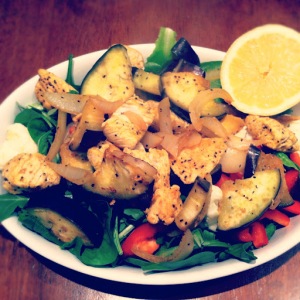There are many factors that contribute to a person being overweight. It can be frustrating to manage weight when we don't know what the issue is. "Calories in and calories out" does play a role in weight management, but there is more to look at. It's mostly the quality of the calories that matters.
- Behavioral
- Eating when not hungry
- Skipping meals
- Lack of exercise
- Emotional
- Overeating due to stress, anxiety, depression, or frustration
- Metabolic
- Low thyroid
- Slow metabolism
- Medical drugs
- Low muscle mass
- Lack of exercise
- Age
- Gender
- Toxicity
- Metals
- Food colorings, preservative, and flavorings
- Plastics and pesticides
- Bacteria or parasitic overgrowth
- Nutritional
- Eating too many foods that lack nutrients such as processed foods, high sugar foods, and refined carbohydrates
- Consuming more energy (calories) than expanded
- Having an imbalance of essential nutrients (usually it's an excess amount of carbohydrates and not enough protein and healthy fats)
- Not consuming enough energy (calories)
- Not getting enough nutrients
- Digestive issues
- Anorexia/Bulimia
- Excessive exercise
- Allergies
- Stress
- Crohn's and Celiac Disease (gut issues)
- Mal-absorption of nutrients
- High thyroid
- Medication side effects
- Detox/Cleanse: A detox is not the same as fasting and should not be a calorie restriction diet
- Feed your liver: The liver is an organ with many important functions such as making enzymes, making proteins, making bile (helps digest fats), detoxifying chemicals, detoxifying drugs and alcohol, filters about 95% of microbes and toxins from the bloodstream, and regulates blood sugar
- Increase protein: eggs, meats, yogurt, nuts, seeds, legumes
- Increase bitter foods: arugula, dandelion greens, chard, raw cacao powder
- Increase greens: leafy greens, sea vegetables
- Increase sour foods: sauerkraut, vinegars, lemon juice
- Increase herbs and spices: parsley, cilantro, licorice root, cinnamon
- Feed your liver: The liver is an organ with many important functions such as making enzymes, making proteins, making bile (helps digest fats), detoxifying chemicals, detoxifying drugs and alcohol, filters about 95% of microbes and toxins from the bloodstream, and regulates blood sugar
- Regulate blood sugar: Weight gain around the waist is usually a blood sugar issue
- Decrease gluten-containing grains and sugar intake (refined carbohydrates)
- Eat gluten-free grains: amaranth, millet, quinoa, brown rice
- Avoid tropical fruits (banana, pineapple, mango) because they are very high in sugar, stick to berries and seasonal fruits
- Increase non-starchy vegetables: greens, greens, and more greens
- Increase healthy fats: coconut oil, nuts, seeds, nut butters, olive oil
- Increase protein: protein at every meal is important, especially at breakfast (Ideally within an hour of waking up)
- Increase fiber: vegetables, legumes (good source of fiber and protein), flax seeds, chia seeds
- Decrease gluten-containing grains and sugar intake (refined carbohydrates)
- Increase metabolism
- Cinnamon
- Cardamom
- Green Tea
- Ginger
- Garlic
- Apple Cider Vinegar
- Sea Vegetables
- Cumin and Curry Powder
- Hot Peppers (Cayenne)
- Exercise daily
- Exercising in the morning is best because training hard at night messes up cortisol balance and can cause you to hang on to weight
- Get enough sleep!
- Aim for 7-8 hours of sleep each night
- Lack of sleep leads to cravings and overeating
- Stay hydrated
- Water
- Herbal teas






